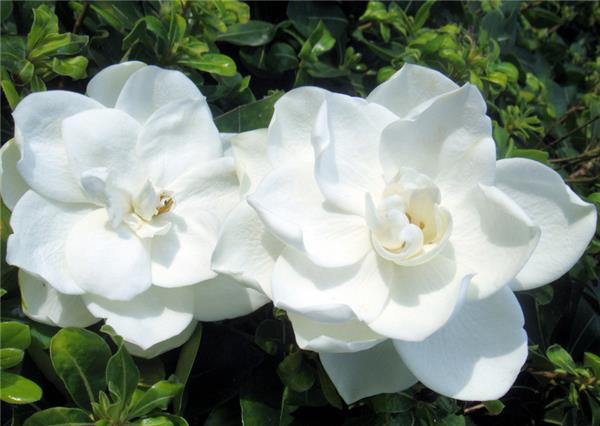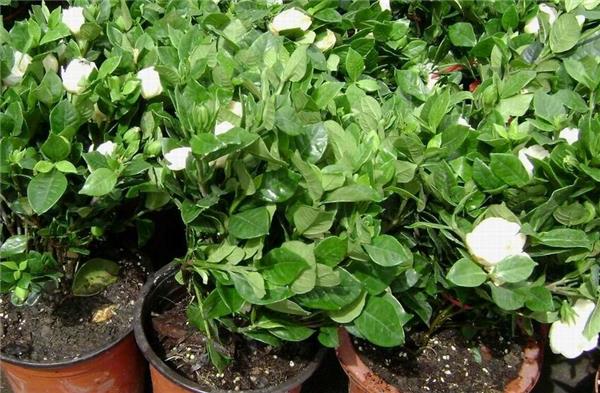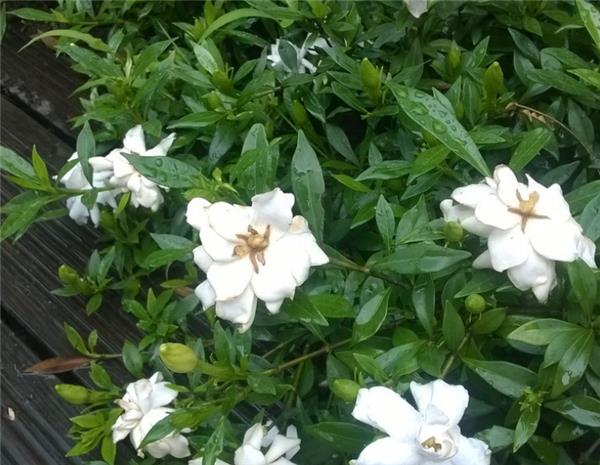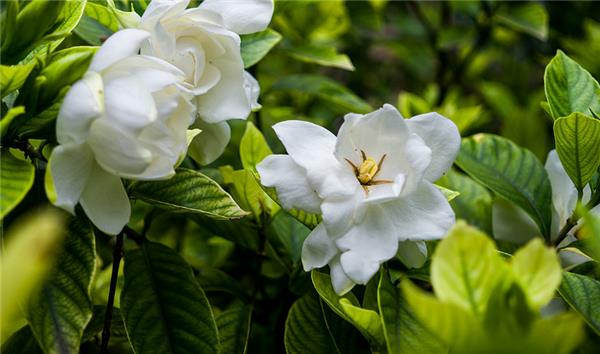Introduction to the cultivation method of Gardenia jasminoides
Now with the improvement of living standards, home decoration has been paid more and more attention, and flowers are still welcomed by owners as always. There is no lack of fans for the fresh and elegant characteristics of gardenia. Gardenia likes warmth and is not hardy. In the south of the Yangtze River, you can spend the winter in the open field, and the northern area is only suitable for potted plants. Let's take a look at how to raise gardenia.

Brief introduction of Gardenia jasminoides
Gardenia jasminoides is a tufted small shrub with trigeminal growth and strong germination, such as non-pruning, overlapping branchlets, disordered plant shape, mutual interference, airtight, nutrient dispersion, not only unbeautiful plant shape, but also affect flowering.
Second, how to raise gardenia
1. Planting
Fertile acid culture soil should be used to cultivate gardenia. Generally, 4 parts of rotten leaf soil, 4 parts of garden soil and 2 parts of sandy soil can be mixed and mixed with 1-2 grams of sulfur powder per kilogram of culture soil. The lack of iron that can be used by plants in neutral or alkaline soil can easily cause leaves to turn yellow.
2. Fertilization
Gardenia likes fertilizer, in addition to changing pots with organic fertilizer as base fertilizer, topdressing should also be applied frequently during growth and development, and thin fertilizer is advisable. In addition to frequent application of alum fertilizer and water, quick-acting phosphate fertilizer (2m) will be applied three times after budding, such as 0.5% superphosphate, etc.
During the growth period, 0.2% ferrous sulfate is irrigated once every 10 murals for 15 days, or alum fertilizer water is applied every 10 murals for 15 days (the two can be carried out alternately). This can not only prevent the soil from turning sour, but also replenish the soil with iron, thus preventing the leaves from turning yellow.

3. Watering
It is best to water gardenia with Rain Water or fermented rice water. Gardenia like to be moist, in addition to the usual need to keep the basin soil moist, but also must often pay attention to increase air humidity. Therefore, spring and summer should spray foliar surface with clear water every morning and evening and sprinkle water to the nearby ground to increase air humidity. Watering should be less in winter, but branches and leaves still need to be sprayed and washed frequently to keep the leaves clean.
4. Lighting
Gardenia likes the sun, but is afraid of the heat and scorching sun. It grows best in a semi-shady place, and 60% of the light throughout the day is enough to meet the needs of its growth.
5. Temperature
The growing period is from 18 ℃ to 22 ℃, and the overwintering period is from 5 ℃ to 10 ℃. If it is lower than-10 ℃, it is easy to be frozen.
6. Timely pruning
Gardenia jasminoides has strong sprouting power, easy to overlap branches, airtight and dispersed nutrition. In normal shape, three main branches should be selected according to the shape of the tree, and other branches sprouting from root tillers should be cut off at any time. After the flowers fade, the branches should be truncated in time to promote the germination of new branches under the cut mouth. Pick the heart after the new branch grows three nodes to avoid growing blindly.

7. Prevent yellowing
① is iron deficient. The soil contains too much limestone, calcium, phosphorus, manganese, etc., which will affect the absorption of iron by plants, affect the formation of chlorophyll, make the veins of tender leaves green and spread throughout the leaves. 1pm 500 ferrous sulfate or 0.2% black alum can be applied every 10 days.
② is magnesium deficient. Acid red soil and excessive potassium and ammonium are prone to magnesium deficiency, which makes the veins of the old leaves in the lower part of the plant green and yellow, which can be sprayed with 1% to 2% magnesium sulfate solution, but excessive application of magnesium will cause calcium deficiency and hinder the development of xylem in roots and stems.
③ basin soil is too wet or too dry.
④ is exposed to the sun in summer.

Through the above introduction of how to raise gardenia, I believe many flower friends have learned how to cultivate gardenia, and those who like gardenia can also try to breed a pot. If you want to know more about gardenia, please pay attention to the relevant content.
Related
- Wuhan Hospital Iron Tree Blooming Result Was Instantly Frightened by the Gardener Master
- Which variety of camellia is the most fragrant and best? Which one do you like best?
- What is the small blue coat, the breeding methods and matters needing attention of the succulent plant
- Dormancy time and maintenance management of succulent plants during dormancy
- Minas succulent how to raise, Minas succulent plant pictures
- What are the varieties of winter succulent plants
- How to raise succulent plants in twelve rolls? let's take a look at some experience of breeding twelve rolls.
- Attention should be paid to water control for succulent plants during dormant period (winter and summer)
- Watering experience of twelve rolls of succulent plants
- Techniques for fertilizing succulent plants. An article will let you know how to fertilize succulent plants.



